Finding pathways out of fragility has become a major priority of the development community given the rise of extreme poverty, conflict, and violent extremism in these contexts and their acute vulnerability to pandemics, natural disasters, and global price shocks.
Amid recent high-profile efforts to tackle this issue, including by the LSE-Oxford Commission on State Fragility and the World Bank and U.N. Pathways for Peace project, a less observed initiative is taking shape within the U.S. Agency for International Development (USAID) that will inevitably grapple with this challenge.
USAID’s Journey to Self-Reliance is an effort to help country partners eventually handle their own development challenges without U.S. foreign assistance. While not immediately apparent that this initiative will focus on fragility, it surely will. Some 70 percent of USAID’s aid portfolio goes to fragile states. Since the initiative will not cherry-pick countries closest to crossing the “self-reliance” threshold, but rather extend to all countries where USAID operates, most of the “journey” will be through the difficult terrain of fragile states.
Commitment and Capacity
The initiative’s theory of change for supporting partners’ self-reliance is premised on two elements: commitment and capacity. USAID will develop country roadmaps to support a country’s commitment to liberal democracy and inclusive development, and its capacity to deliver on this commitment across political, social, and economic (including environmental) spheres. Where commitment and capacity for liberal democratic institutions and norms increase, so too will the country’s self-reliance.
The initiative will measure commitments to open and accountable governance, inclusive (rights-based) development, safety, and security, and open, regulated markets. It will measure capacities of government, civil society, citizens, and business to support this commitment. This will be supplemented by secondary, country-specific analytics as useful.
The Journey to Self-Reliance is meant to serve as a high-level guidance system for USAID against the backdrop of agency-wide reforms, including a reorganization that promises to help USAID become more agile, joined-up, and coherent in its development approach and effectiveness.
We offer the following guidance for the “journey” through fragile states.
Blending Self-reliance and Resilience
The development community has increasingly embraced a “fragility to resilience” approach in fragile states as a means of better identifying complex and interacting risks and adaptive capacities for dealing with them.
The OECD has defined fragility in terms of risk and resilience—as the “combination of exposure to risk and insufficient coping capacity of the state, system, and/or communities to manage, absorb, or mitigate those risks.” The OECD’s fragility framework identifies ratios of higher risk and lower coping capacity in five dimensions (political, societal, economic, environmental, and security) to arrive at a list of 58 fragile contexts, 15 of which are deemed extremely fragile.
Several of the OECD framework indicators are the same or similar to USAID’s self-reliance initiative, including V-Dem indicators on liberal democracy and social equality. What is distinct is that USAID’s initiative will measure multidimensional commitments and capacities for democracy, inclusivity, and open markets while the OECD measures multidimensional risks and capacities to boost state and societal resilience.
From a fragility perspective, the immediate concern lies in focusing on commitments over risks. A focus on commitments veers dangerously close to providing “best practice” templates and prescriptions for Western looking institutions in foreign political economies and social systems without deeply appreciating or responding to the unique exigencies of those contexts.
A growing body of literature has shown the perils of trying to increase commitments to Western democratic and social institutions without factoring in risks. This includes a rush to elections that introduce adversarial politics too soon, a point forcefully affirmed by the Fragility Commission but which continues to play out. For example, donors have recently called for an “expeditious” but responsible move to elections in South Sudan.
More subtle effects have included the outward creation of Western-looking institutions in national governments as a condition for aid assistance but which ends up contributing to a shadow system within these governments based on patronage and rents. Aid flows for Western-style state-building and development have at times discouraged governments from renegotiating political bargains within society because aid dollars filled immediate gaps in their budgets. This has the knock-on effect of foreclosing on meaningful government efforts to establish more representative forms of taxation, a key focus of the self-reliance initiative.
On the flipside, attempts to strengthen resilience without broader commitments embodied in Sustainable Development Goal 16 for peaceful, just, and inclusive societies might inadvertently help predatory regimes to stay in power through repression, violence, and intimidation. For these reasons, it is vital to distinguish between positive and negative resilience. Positive resilience is responsive to societal needs and performs its functions with widening state legitimacy. Negative resilience handles shocks and stress in ways that may, for example, deter violence against the state by increasing fear and intimidation among populations.
Positive resilience offers a means to blend self-reliance and resilience objectives by focusing on risks and coping capacities that simultaneously promote commitments to more inclusive development, state legitimacy, and open markets. The benefit of the blended approach is that it avoids transplants of supply-driven Western institutional templates and best practices by tailoring demand-driven capacities to meet complex contextual risks.
By incorporating a resilience focus, USAID’s self-reliance theory of change could posit that strengthening a partner’s commitment and capacities to positive resilience will increase the partner’s ability to better handle their own development challenges.
The 2017 World Development Report (WDR) on Governance and the Law notes that countries with the most long-term growth succeeded more by managing major setbacks and crisis than through rapid growth. Sierra Leone bears this point out. Positive growth and rising institutions after more than 15 years of conflict were severely disrupted by the Ebola outbreak in 2014 that wreaked havoc on its economy, health systems, fiscal budget, and social fabric. In the country’s case, self-reliance would have been better achieved by mitigating a pandemic than accelerating market and developmental reforms.
Several sectors have become increasingly good at anticipating and adapting to shocks and stress, most notably the food security and climate adaptation sectors. USAID has become a leading aid agency for resilience in these sectors. Yet, the ultimate resilience of these sectors to rebound from shocks and stress will rely on higher levels of structural reform toward positive resilience.
The World Bank and UN Pathways for Peace report implicitly embraces the view that structural reforms towards positive resilience is the best means of preventing conflict and other crisis: “The SDGs confirm that building resilience through investment in inclusive and sustainable development—including addressing inequalities, strengthening institutions, and ensuring that development strategies are risk-informed—is the best means of prevention”. Increasing efforts to apply resilience to stabilization, peacebuilding, and health have similarly affirmed the value of better fitting development capacities to risks at a systems level.
Strengthening governance in fragile states to promote structural reforms for state and societal resilience is the next frontier in supporting fragile states.
The Governance Challenge for Positive Resilience
The European Union’s new “strategic approach to resilience” is the first major attempt by a donor to formulate a “whole of state” and “whole of society” resilience approach to fragility. A central challenge for this strategy and USAID’s self-reliance initiative will be how to support transitions from fragility to positive resilience from low starting points, where elite bargains and economic rents benefit only the few and governance institutions are weak, leaving broader society vulnerable to myriad shocks and stress.
The Fragility Commission prescribes a formula. It emphasizes power-sharing over elections as an immediate step, followed by quick win measures to boost societal confidence and the establishment of checks and balances to contain would be spoilers. It prescribes the use of a dual “narrative” and “signaling” approach. Narrative supports nation-building processes by fostering a shared identity, vision, values and elite commitments to progress; signaling backs-up the narrative through decisive actions and resources to promote the rule of law, justice, and more inclusive development, which further builds societal confidence in the government and national reforms. Although resilience is given key emphasis in the report, it extends mainly to the economy and natural disasters. Its formula for power-sharing is not resilience focused insofar as offering insights into the diverse range of risks that different political economies can present, and how to build adaptive capacities for dealing them.
A more comprehensive version of “power-sharing” is the concept presented by Ann-Marie Slaughter in The Chess-Board & The Web on the role of networks, which would lead one to identify the political, social, and economic networks that exist in a state or community and then figure out how to leverage/work with them to promote stability and resilience.
The WDR is especially helpful in providing the ingredients for a more holistic understanding of how political economy risks undermine broader political settlements and governance institutions. We offer a framing of the WDR in broad resilience terms to stimulate further thinking in this area.
In resilience terms, the WDR identifies security, equity, and prosperity as core governance objectives. It identifies three main governance functions—coordination, commitment, and cooperation—for achieving these objectives and three major risks of “power asymmetries” disrupting these functions: clientism, elite capture, and exclusion.
When these power asymmetries materialize, they dictate who is excluded from the policy arena, which technical ministries will be strengthened and neglected, and how resources and rents will be distributed. The core task is to adaptively manage against power asymmetries to strengthen core governance functions so they can deliver on wider governance objectives. The process entails a diagnosis of which governance function(s) are compromised, and then a decision as to the right level of redress—policy intervention, institutional reform, or meta-level reforms via the constitution or elections. Three drivers of change help raise capacities for coping with power asymmetries and building up governance functions: incentives, preferences and beliefs, and contestability in the policy arena.
The ability of new economic, social, and political challengers to enter the system without triggering violent conflict is a key measure of the resilience of the political system. Toward positive resilience, where the system can accept new economic actors it can promote wider market efficiencies and growth. Where the system allows for more contestability within and across societal groups, it can strengthen social contracts, economic redistribution, and social protection. Undergirding these efforts is a focus on social capital which helps foster societal trust and reciprocity and is critical for supporting coordination, cooperation, and commitment within and across communities and between communities and government.
The WDR is clear that pathways out of fragility cannot start with “forms” of preferred governance but must work iteratively to strengthen proper governance functions in the face of risks within the political economy. It frames the magnitude of the challenge by noting the global prevalence of deals-based political settlements over rules-based orders and that rulers will only move to rules to prevent a future political loss or to lock-in current political or economic gains. It provides a sobering reality check that “even the countries that enjoy the highest per capita incomes and most peaceful societies in the world, such as most of Europe, emerged from wars and violent contests for power…They were ‘fragile states’ for most of their historical trajectory.”
The promise of USAID’s Journey to Self-Reliance initiative is that it will help the Agency move beyond sector silos and piecemeal projects that characterize the lion’s share of aid assistance in fragile states. In so doing, it promises to better target U.S. foreign assistance to help country partners address governance and structural challenges to moving beyond fragility. The incorporation of a resilience focus into the self-reliance initiative can make or break the effectiveness of its strategic direction and journey.
The Brookings Institution is committed to quality, independence, and impact.
We are supported by a diverse array of funders. In line with our values and policies, each Brookings publication represents the sole views of its author(s).
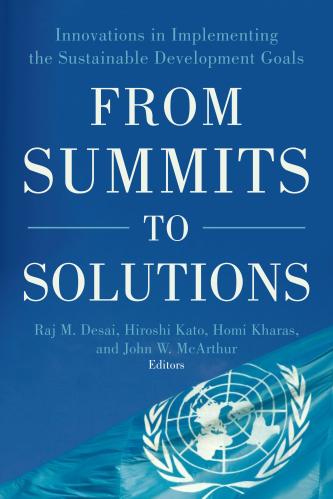
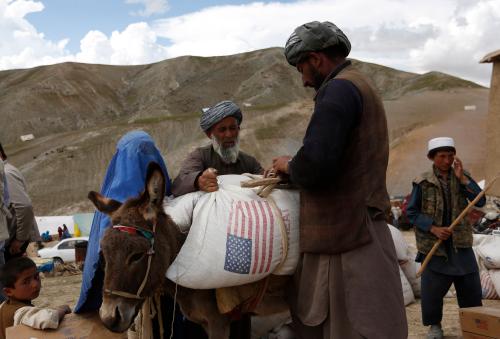
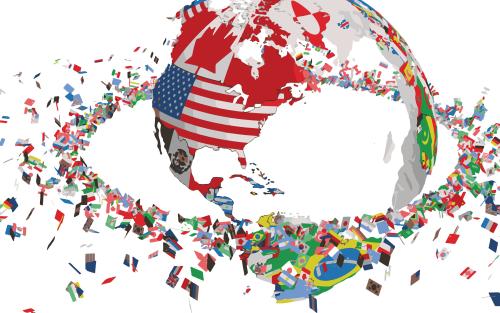
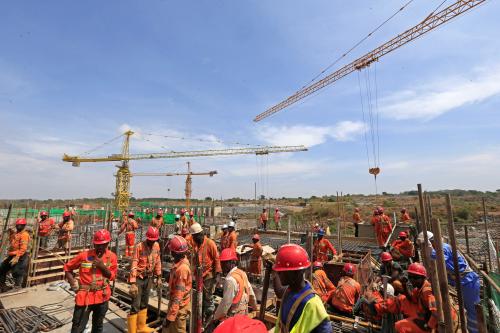




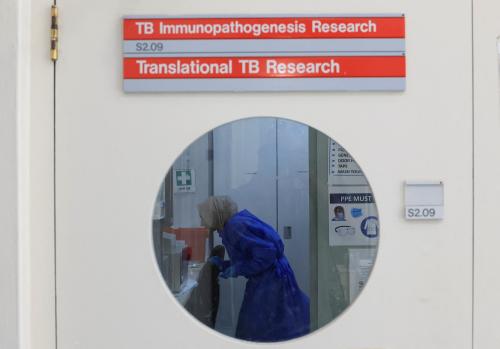
Commentary
From fragility to resilience: Recommendations for strengthening USAID’s ‘self-reliance’ approach
August 17, 2018